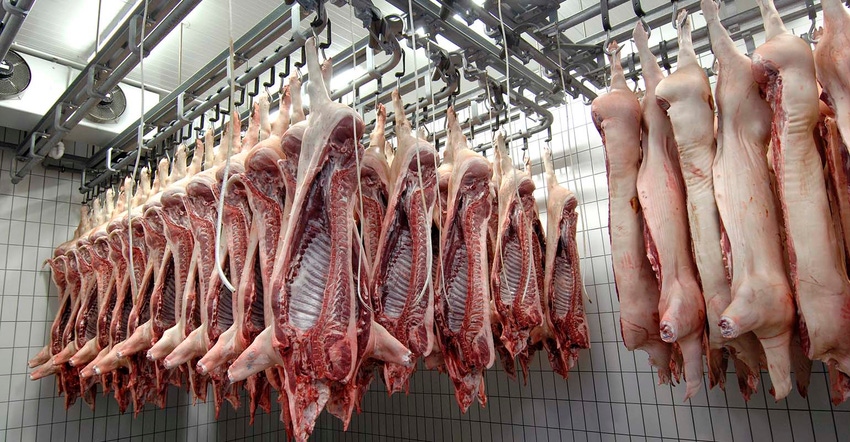New voluntary performance standards for pork plants
Under the New Swine Inspection System, inspectors will be able to conduct more verification tasks that are associated with better food-safety outcomes.
October 31, 2019

Meat processing has come a long way since the early 1900s, when packing plants were graphically depicted in Upton Sinclair’s novel, The Jungle. Since that time, meat inspectors, safety precautions for workers, the use of better technology and higher food-safety standards have arguably made the U.S. food supply the safest in the world. However, there is always room for improvement, and the USDA’s Food Safety and Inspection Service intends to propose new, voluntary performance standards for pork.
The final rule for the Modernized Hog Slaughter Plan was published Oct. 1, and one of its goals is to align hog slaughter inspection with hazard analysis and critical control points principles. It will also allow market hog slaughter establishments to operate under the New Swine Inspection System.
Under the plan, all swine slaughter establishments must develop written sanitary dressing plans and implement microbial sampling to monitor process control. Pork sampling will increase in FY2020 and inspectors will stop testing for Shiga-toxin producing E. coli. However, FSIS will partner with Agricultural Research Service to study STEC in pork.
“Modernization moves inspection away from the traditional control and command approach,” says Kis Robertson Hale, DVM, with the U.S. Public Health Service post at FSIS, during the 2019 annual meeting of the U.S. Animal Health Association this week. Hale explains that under the new rule, plant employees will do two points of sampling, one at the beginning and one at the end, giving plants the options for indicator product sampling.
The biggest thing that has been a source of question is the new swine inspection system.
NSIS requirements for sorting state that establishment personnel are responsible for sorting and removing unfit animals before ante mortem inspection, as well as for identifying and trimming defects on carcasses and parts before postmortem inspection. FSIS will continue to do all the inspections it has done in the past, but sorting will be the responsibility of establishment personnel.
“It shifts agency resources so we can do inspections more efficiently,” Hale says.
Establishment personnel will be responsible for: Identifying with a unique tag, tattoo or similar device animals or carcasses that have been sorted or removed for disposal prior to inspection, and; developing, implementing and maintaining written procedures in its HACCP system to ensure unfit animals or carcasses are properly disposed.
Plants will determine line speed
The new standard authorizes establishments to determine their own line speeds based on their ability to maintain process control. This area has received a lot of attention, Hale says, but the important point is the plant’s ability to maintain process control.
“There is still 100% carcass-by-carcass inspection so it isn’t practical to have excessively high speeds. However, inspectors are empowered to slow the lines,” Hale says. “Back in the day, the speed was set on what food inspectors needed to conduct their tasks. Since then, advancements in science and technology have refined our understanding about line speed requirements. We are still very much focused on hazard reduction.”
Under NSIS, inspectors will be able to conduct more verification tasks that are associated with better food-safety outcomes.
“Science has been the driving force of where we are with pork sampling and slaughter inspection. By increasing industry accountability for pathogen reduction, improvements to food safety are expected,” Hale says. “It’s amazing how many illnesses have been averted by going with a HAACP approach.”
The USAHA covers topics ranging from zoonotic diseases, to regulations, to specific diseases in cattle, horses, sheep, cervids, poultry and pigs, and much more. Leaders from government, industry and academia gather alongside producers to find solutions to health issues that can help animal agriculture thrive.
Source: U.S. Animal Health Association, which is solely responsible for the information provided, and wholly owns the information. Informa Business Media and all its subsidiaries are not responsible for any of the content contained in this information asset.
You May Also Like



